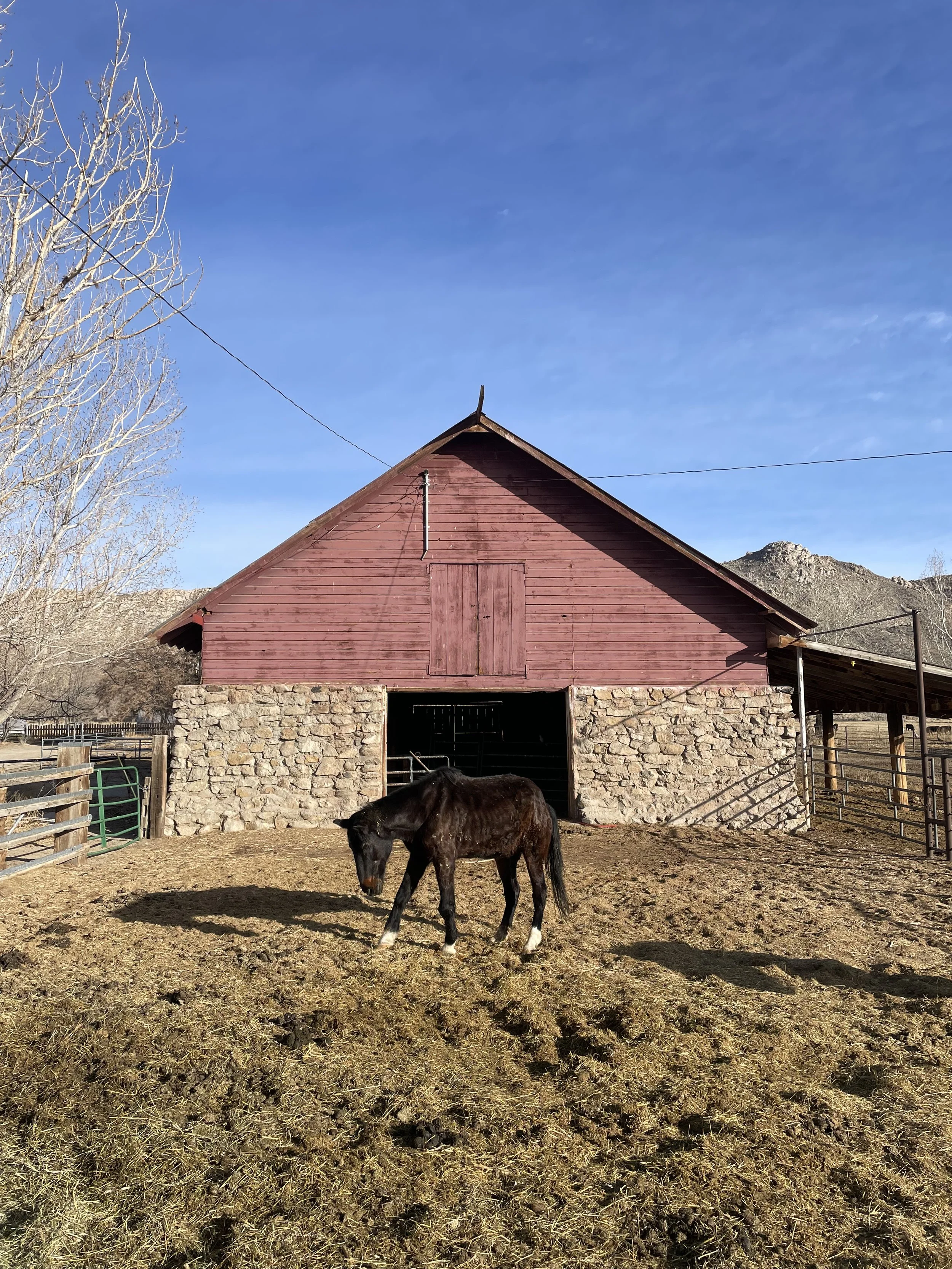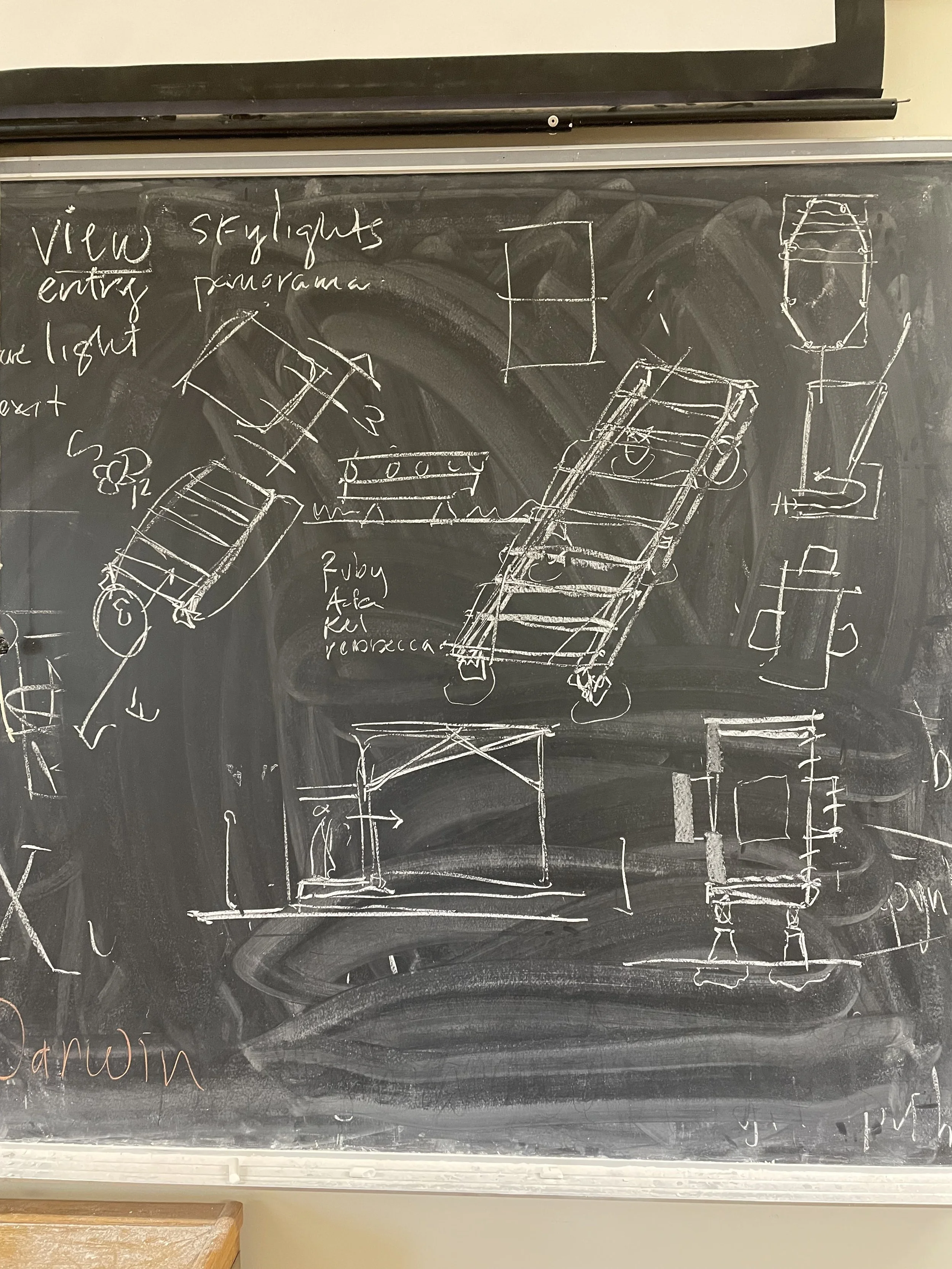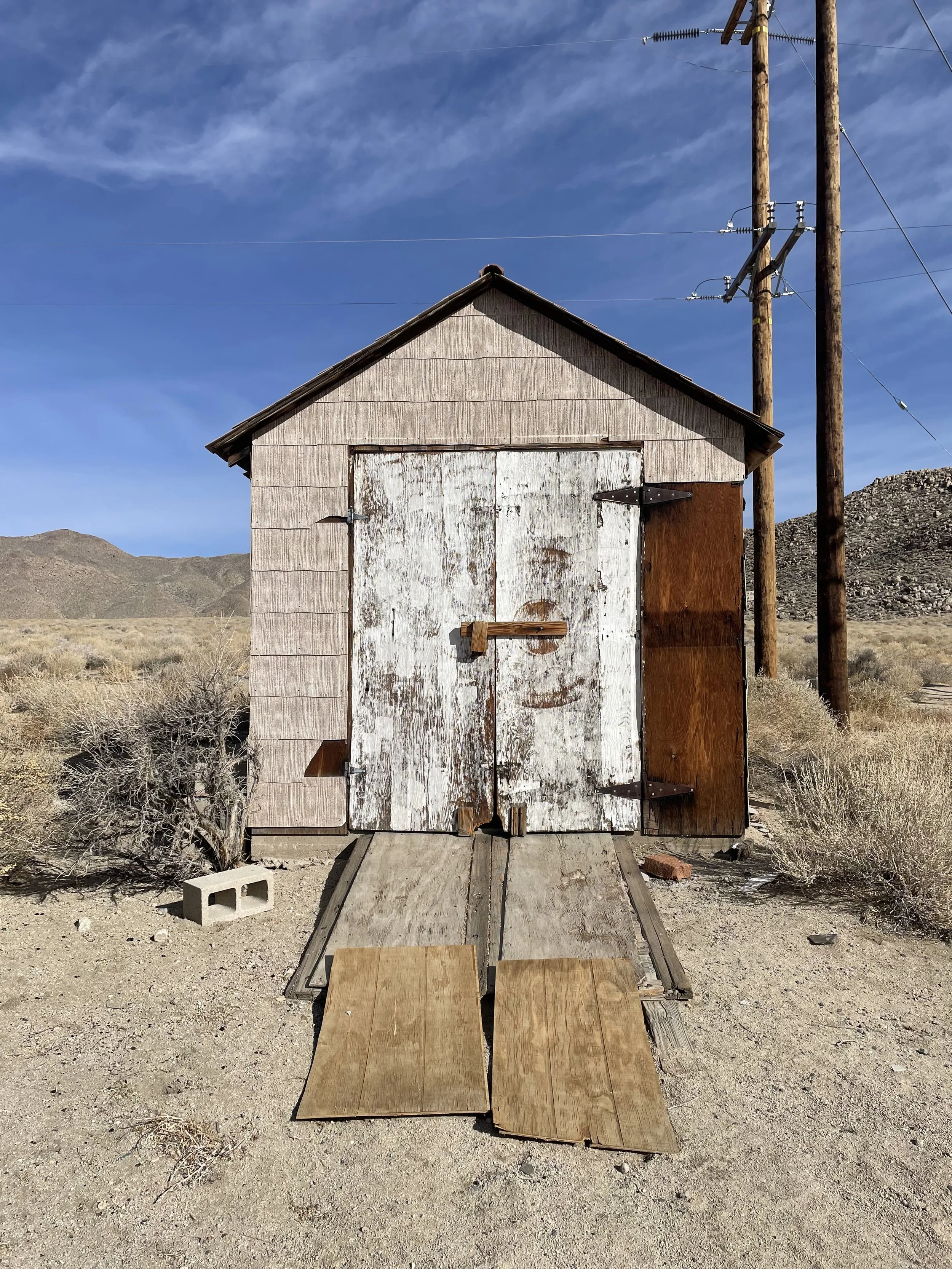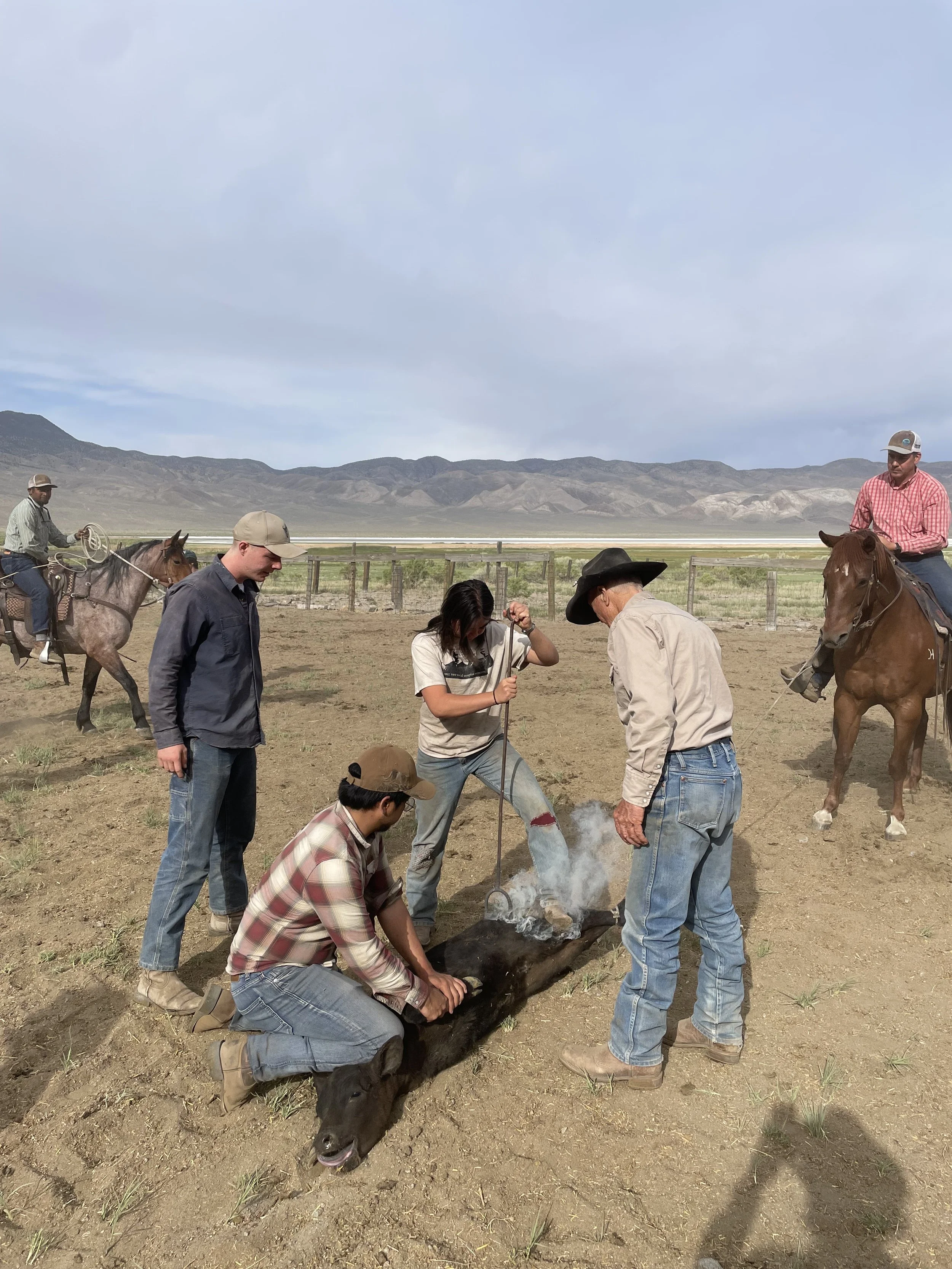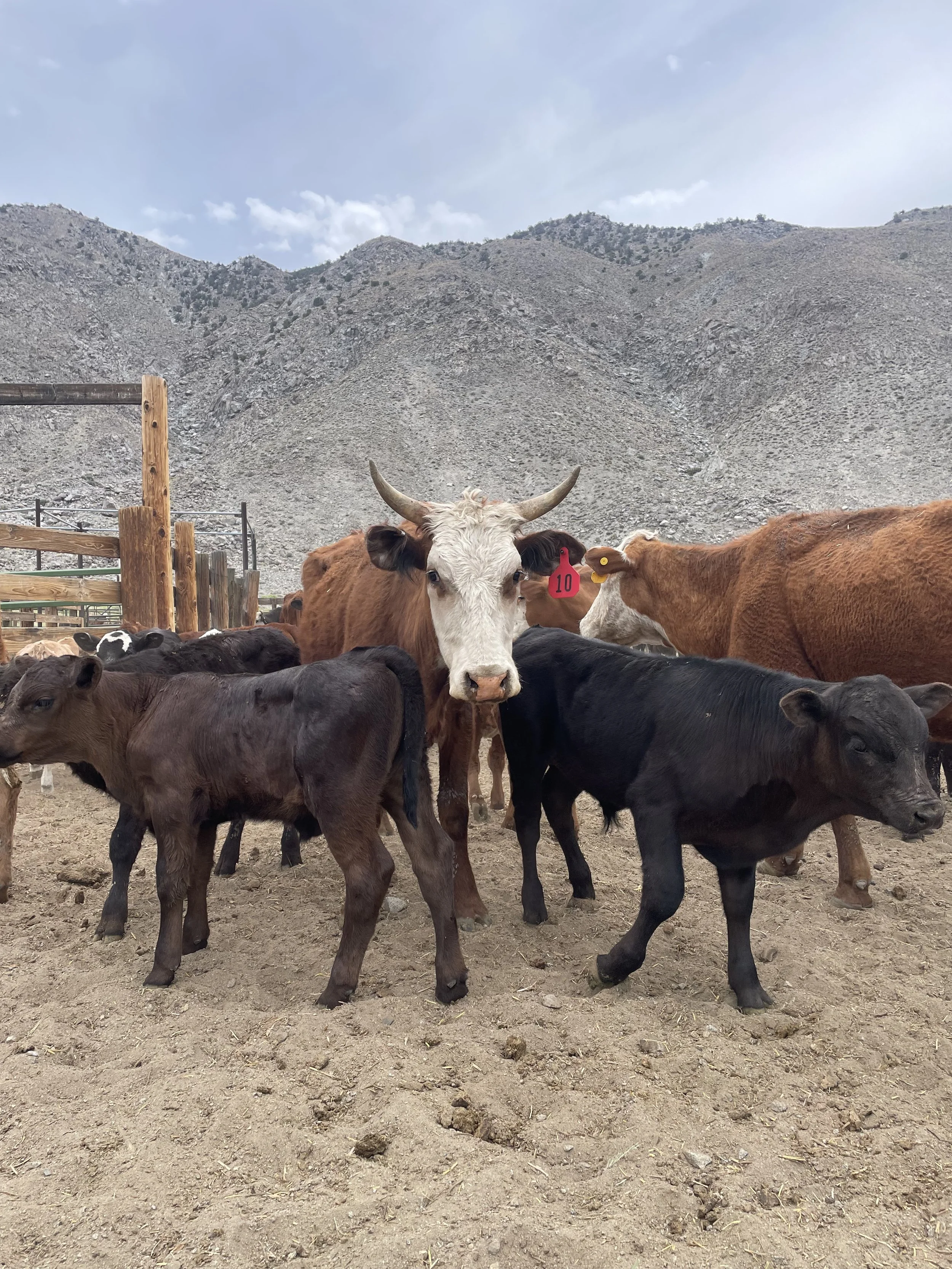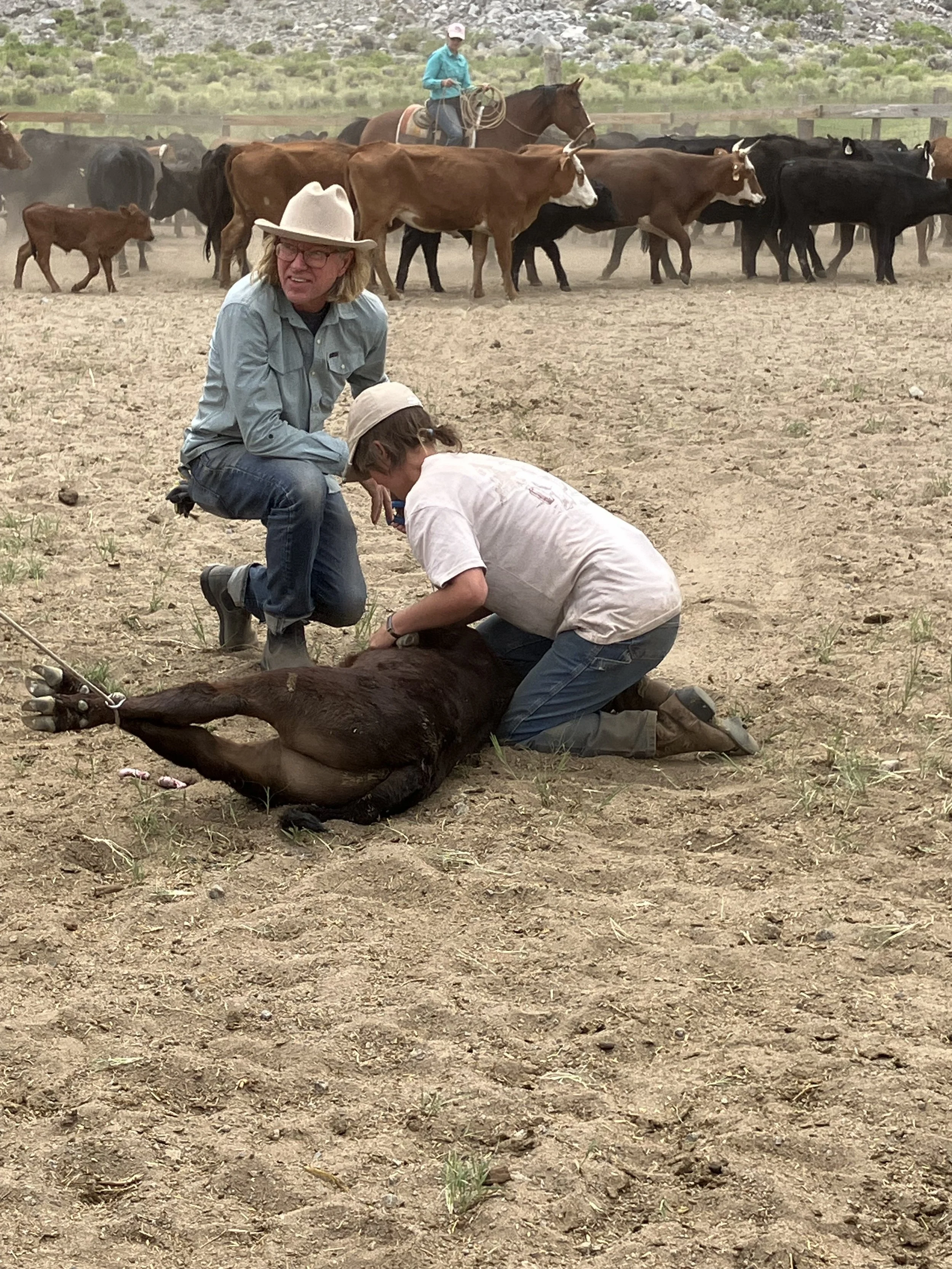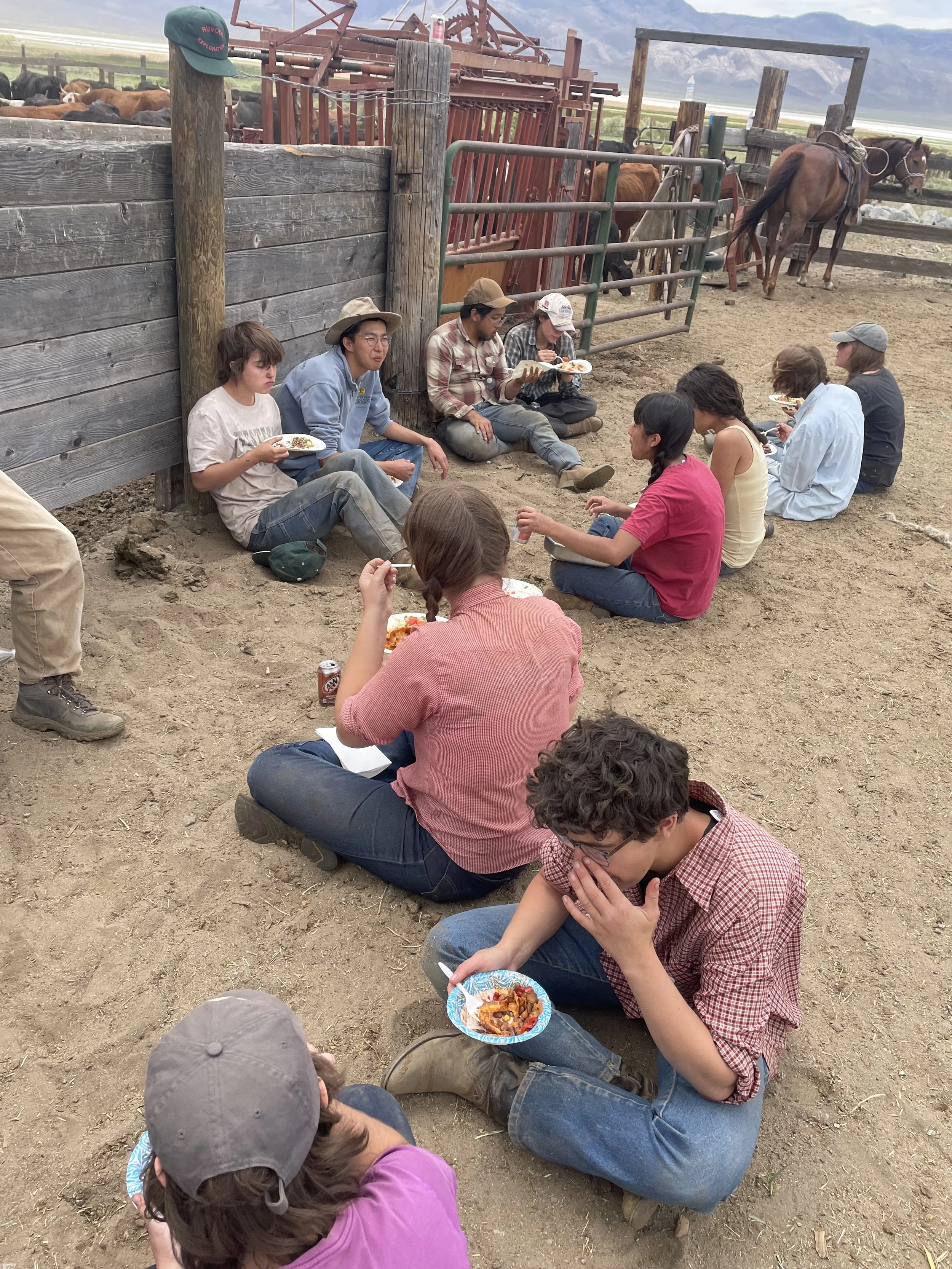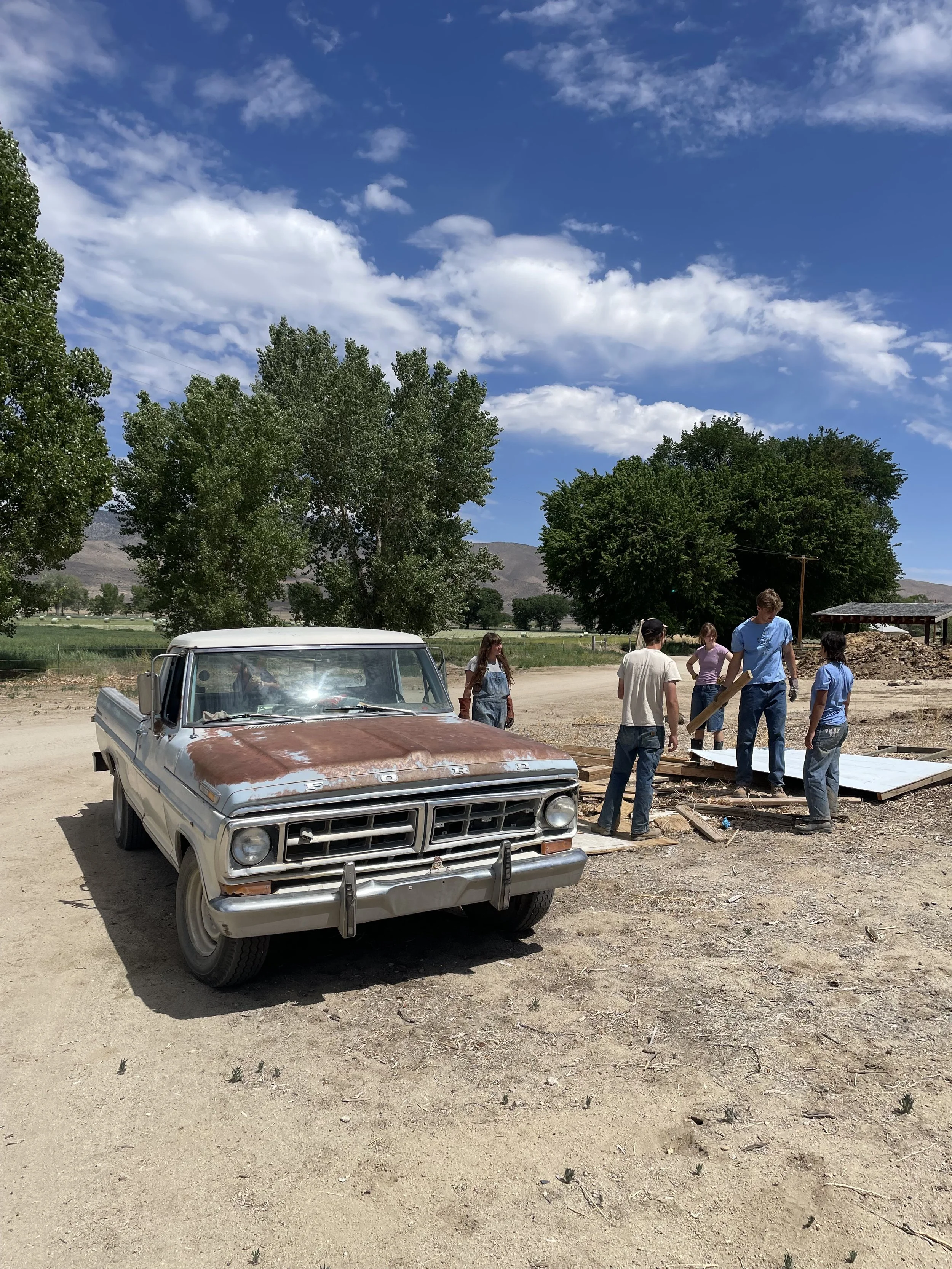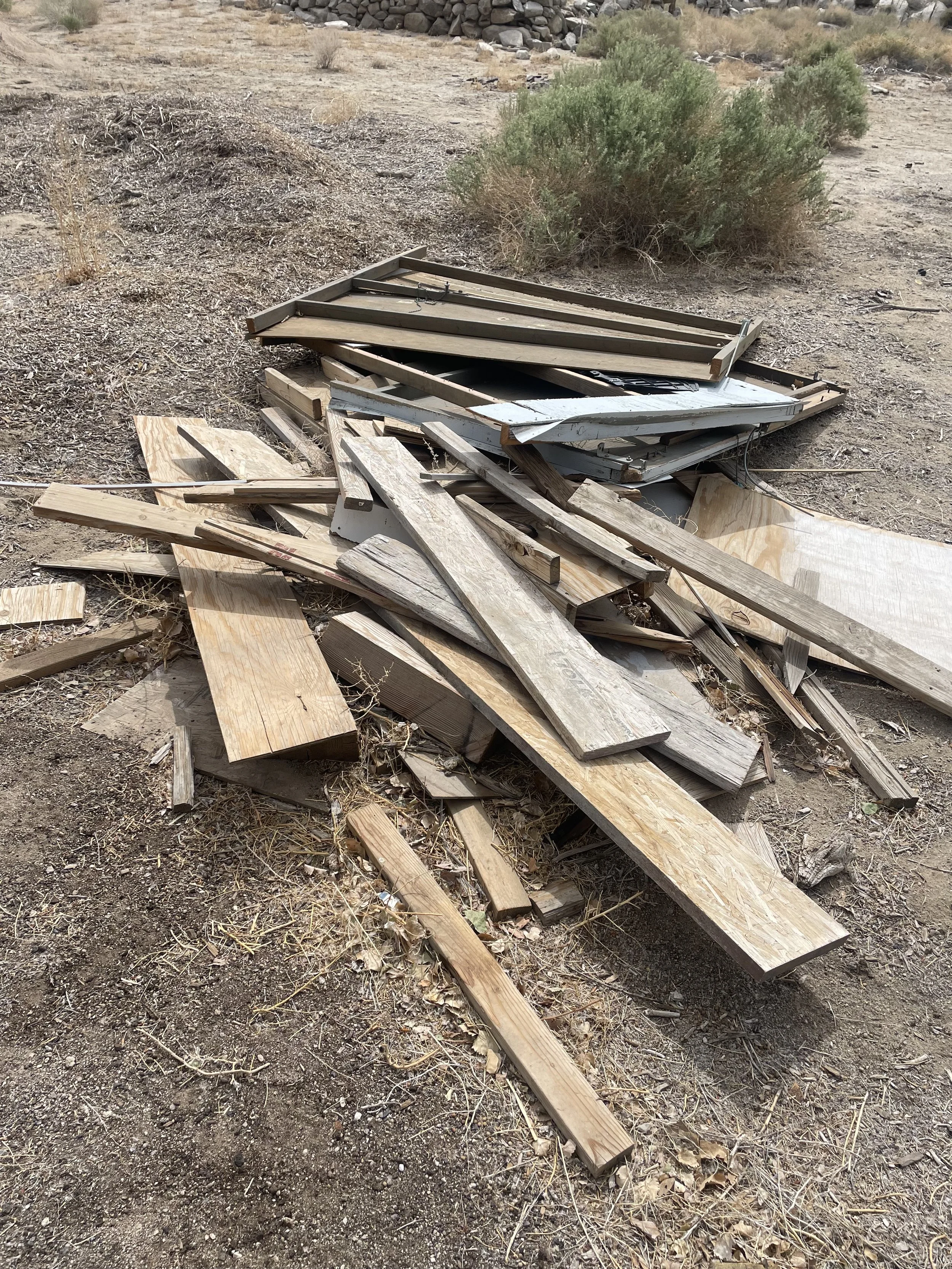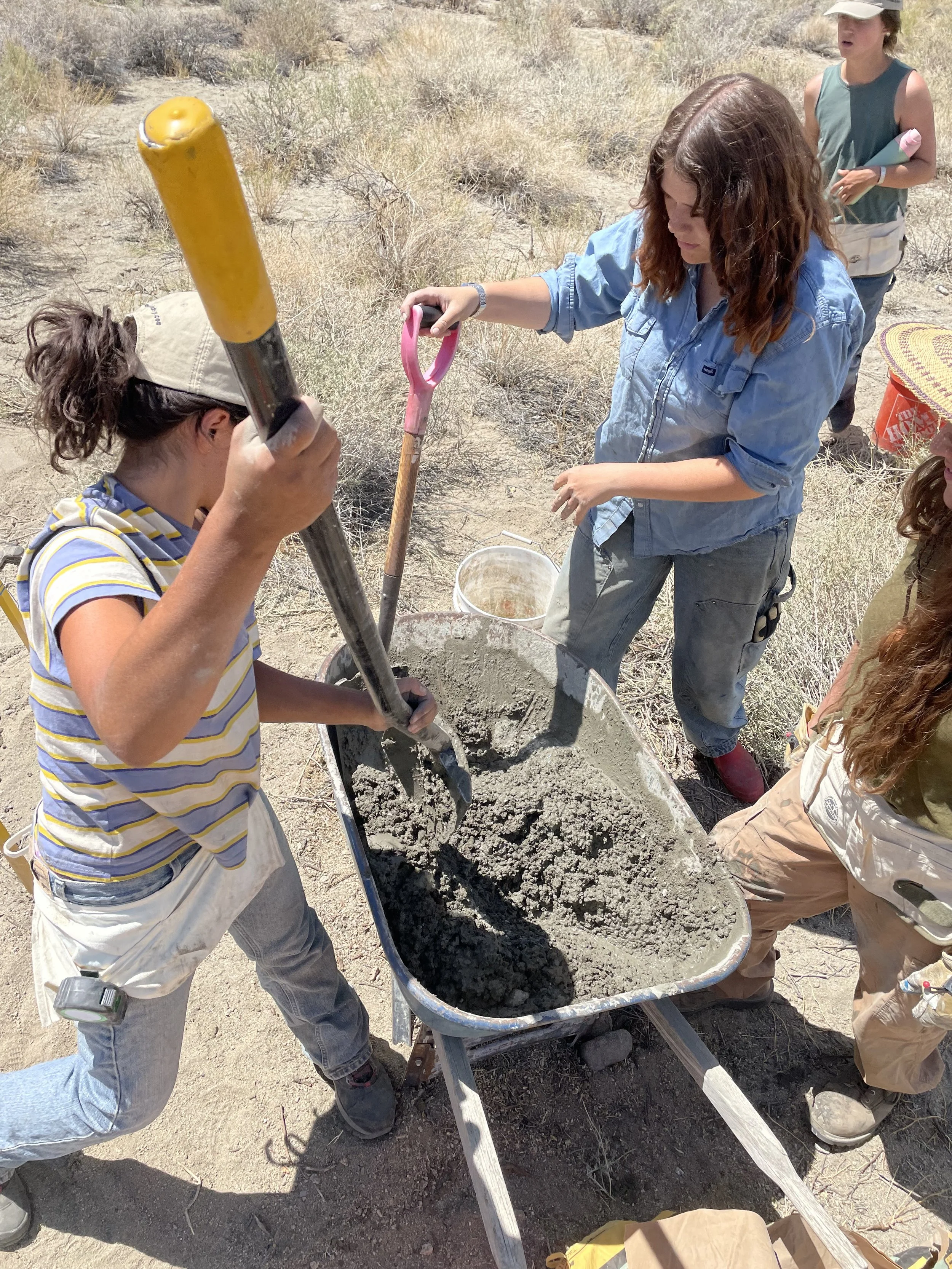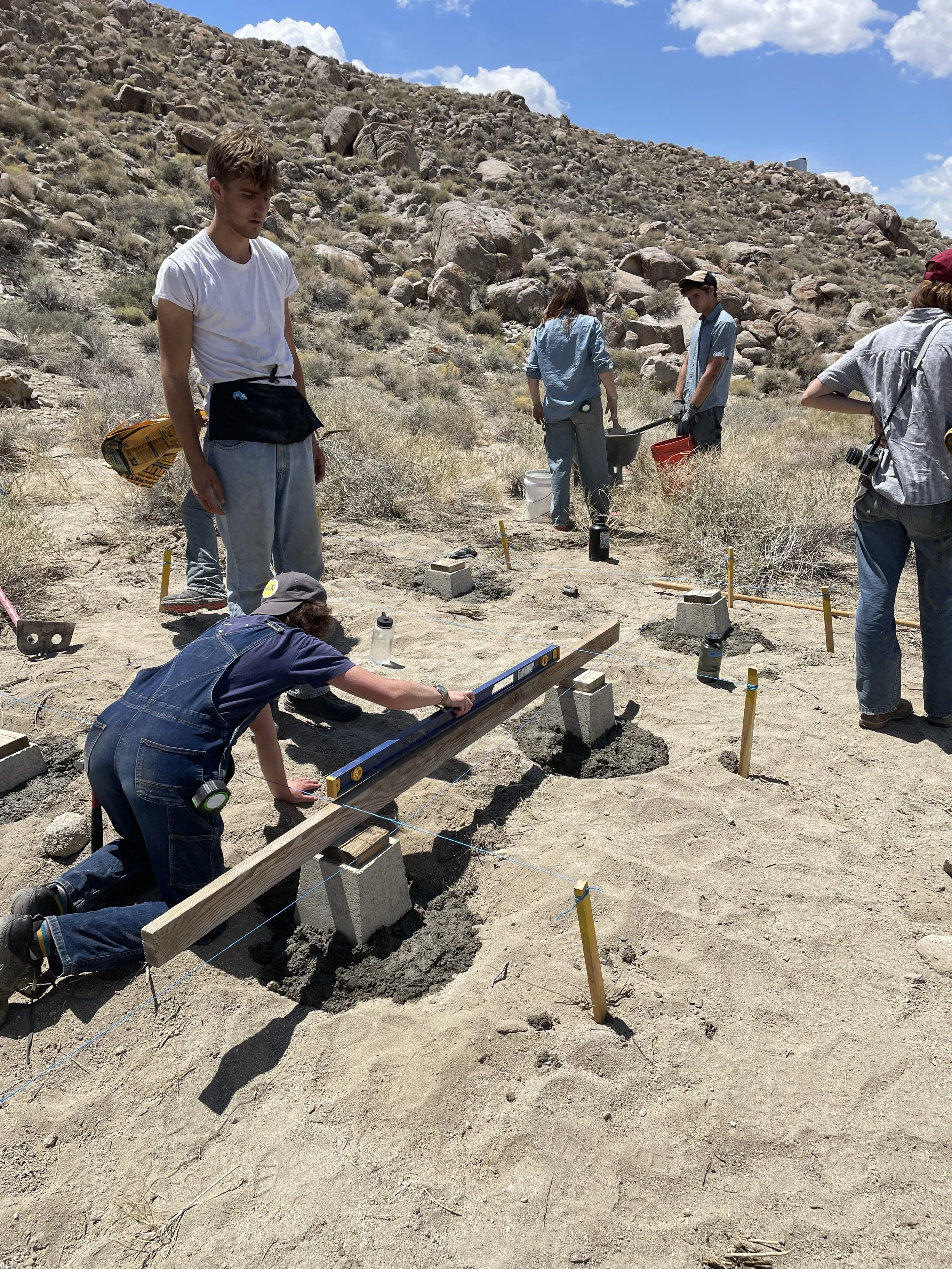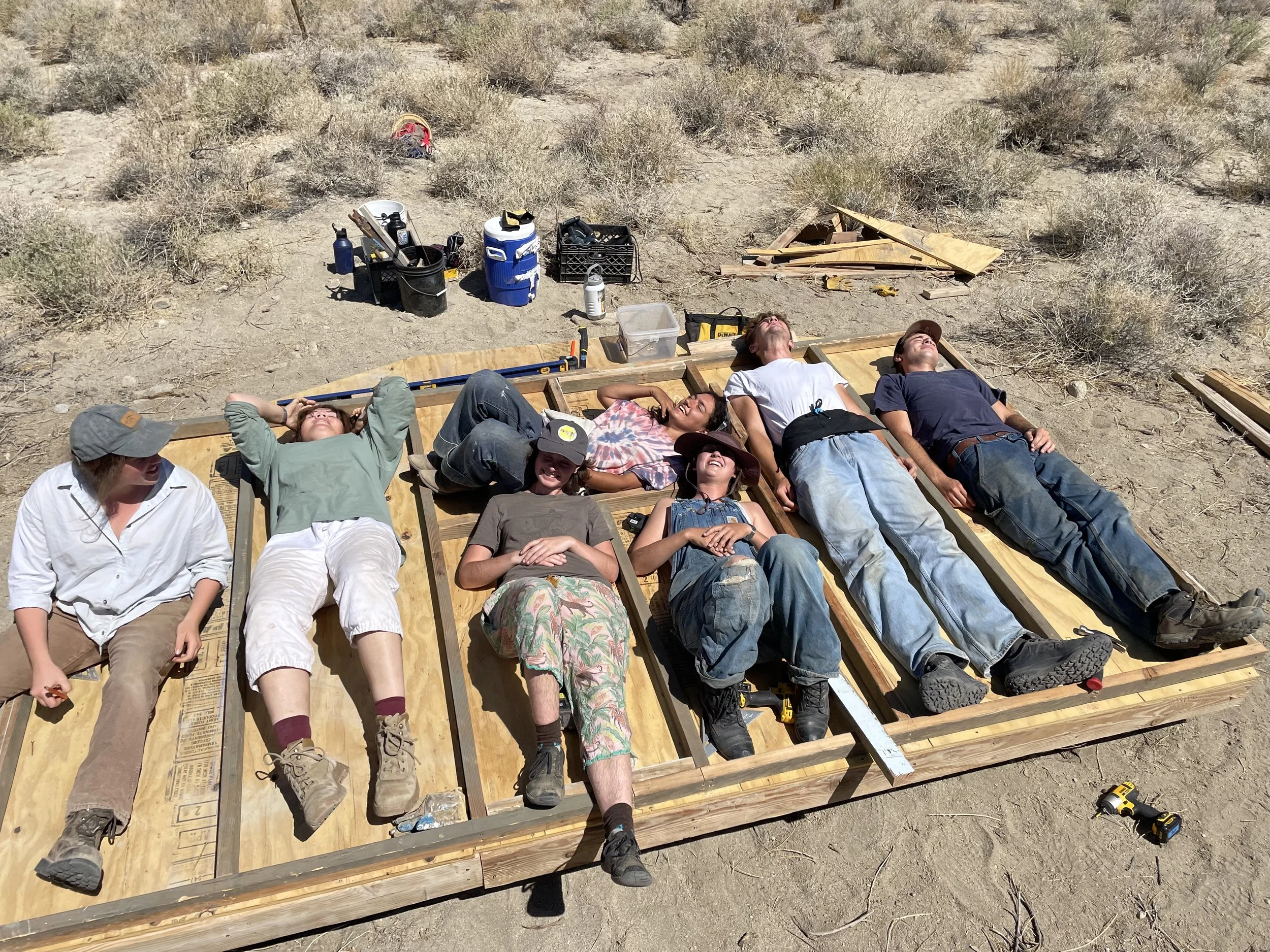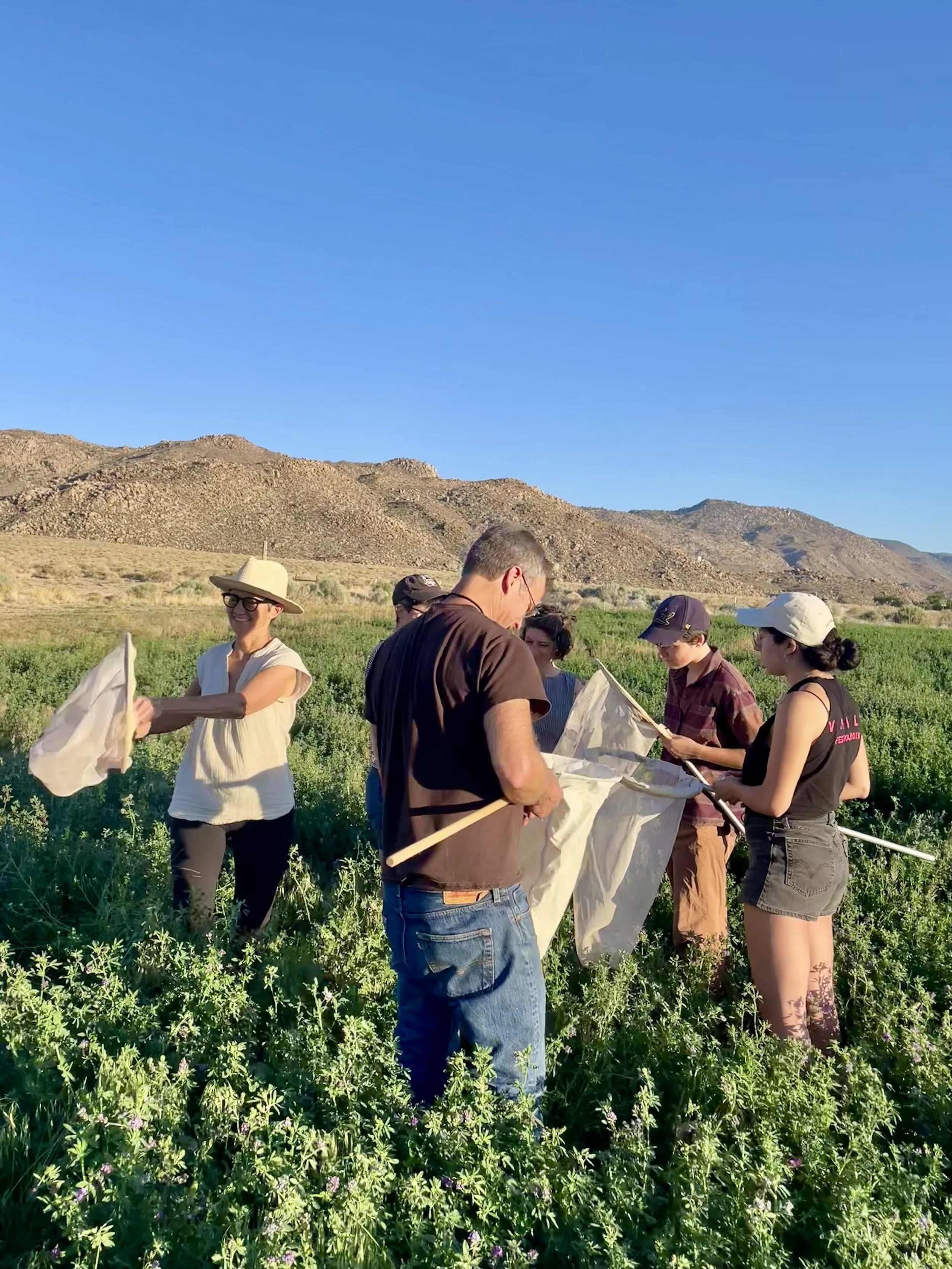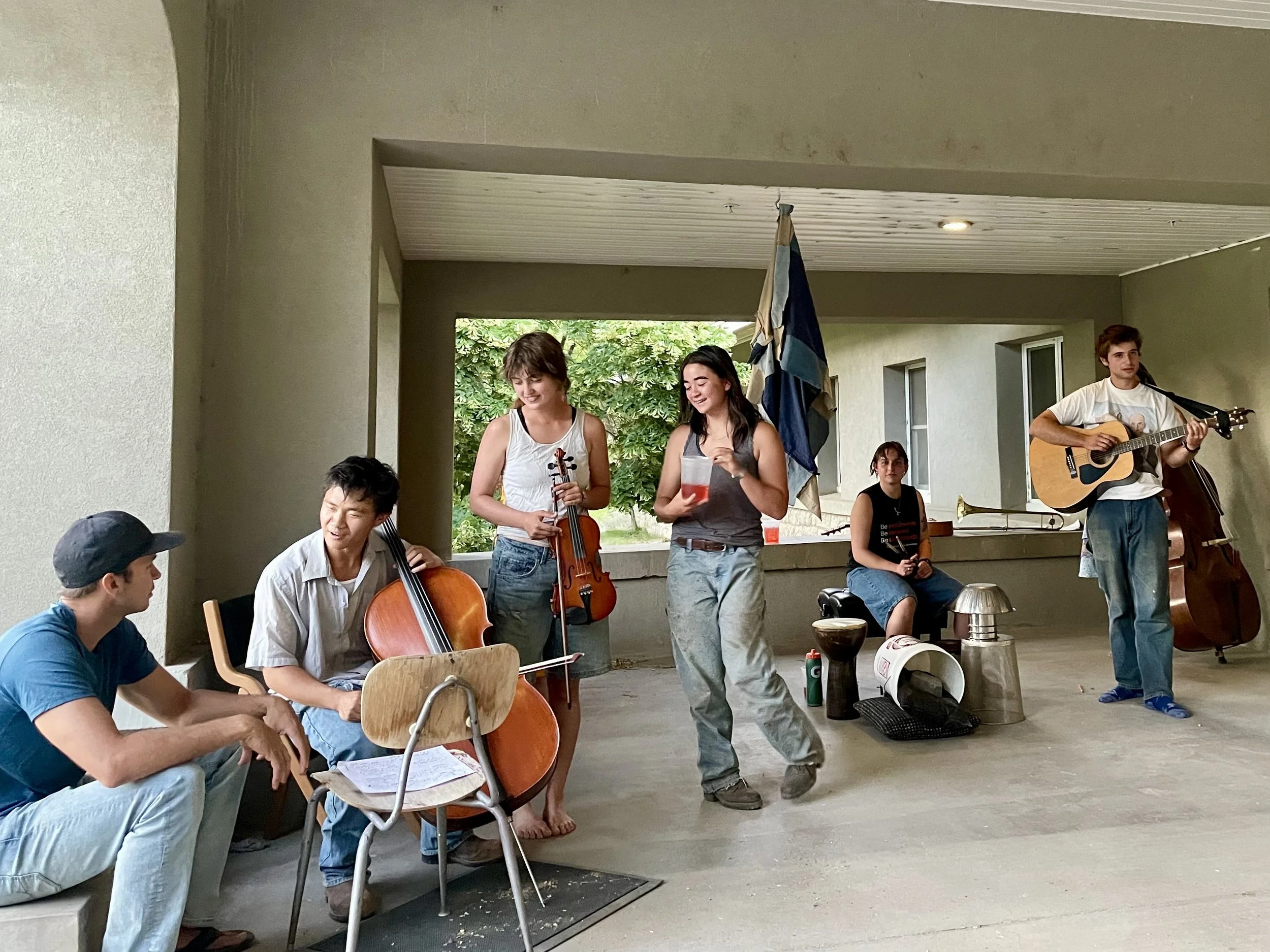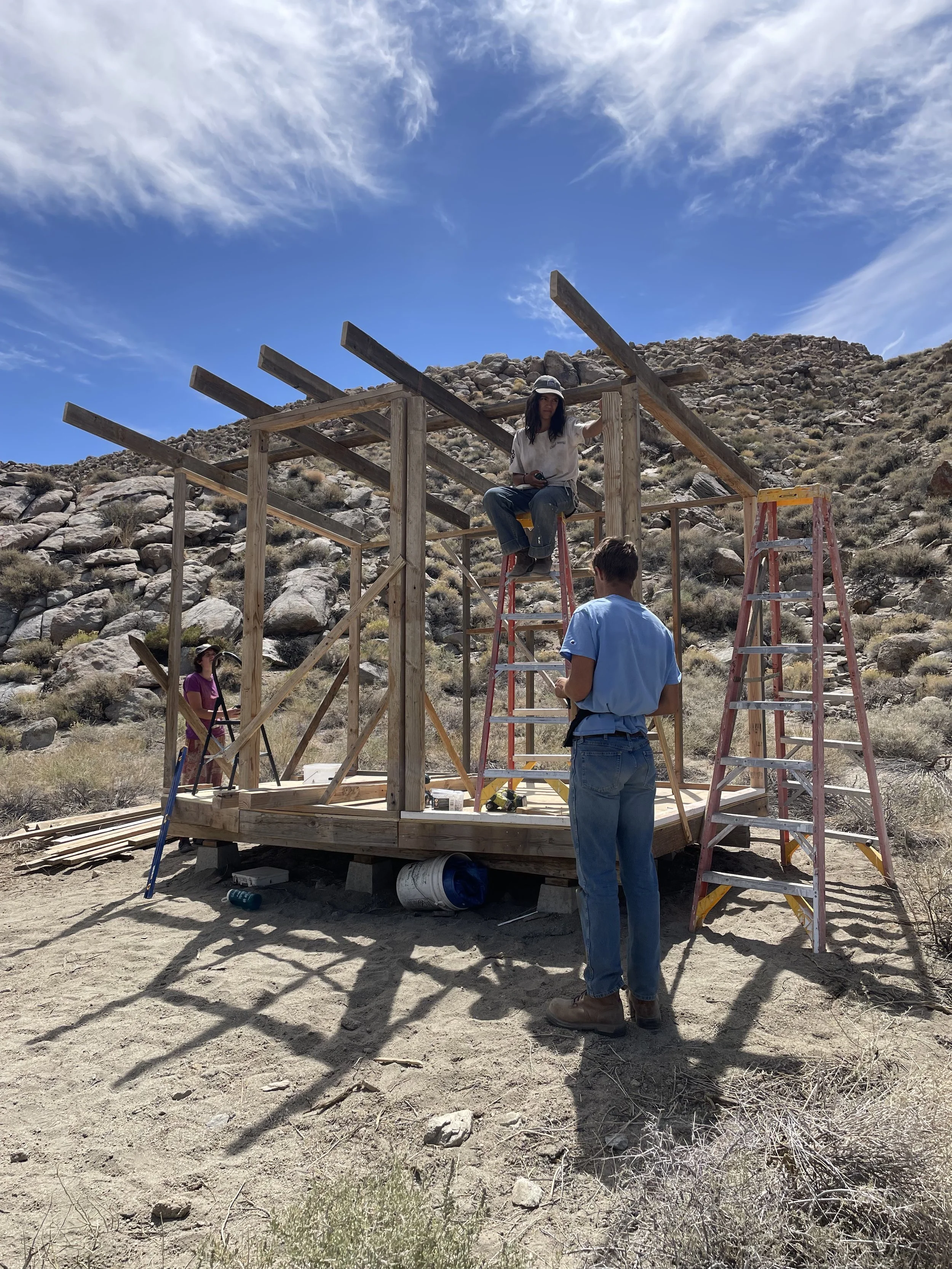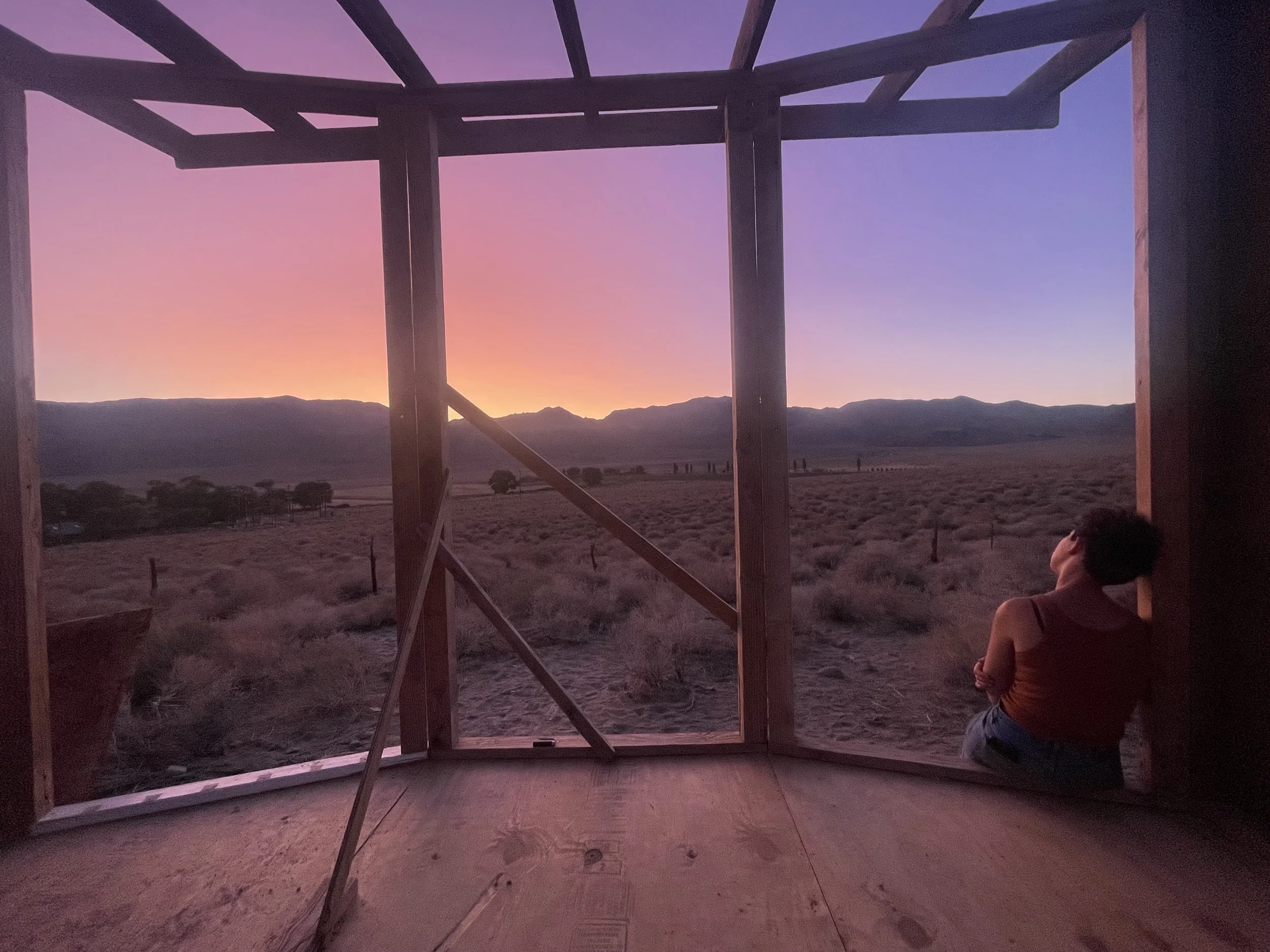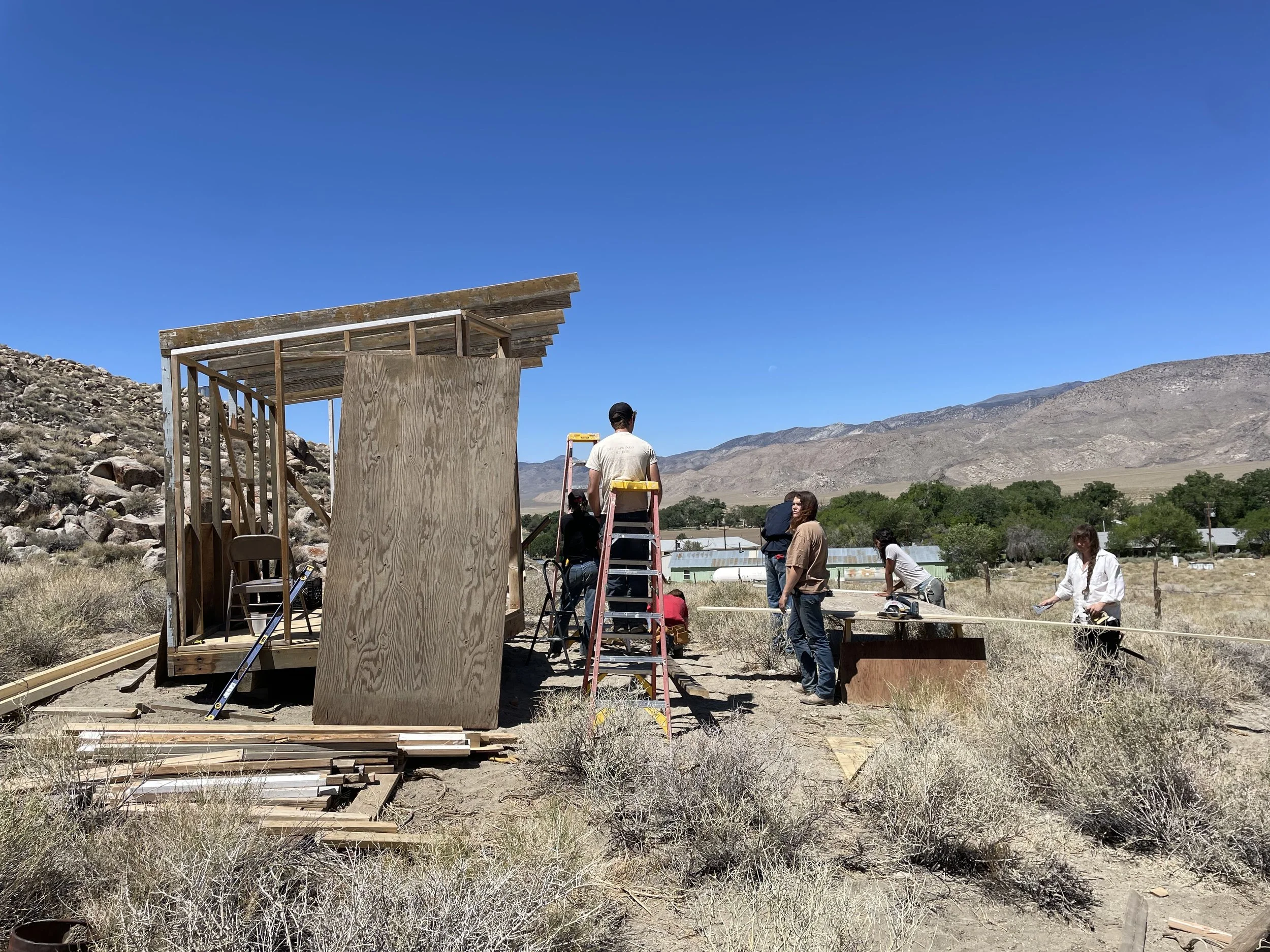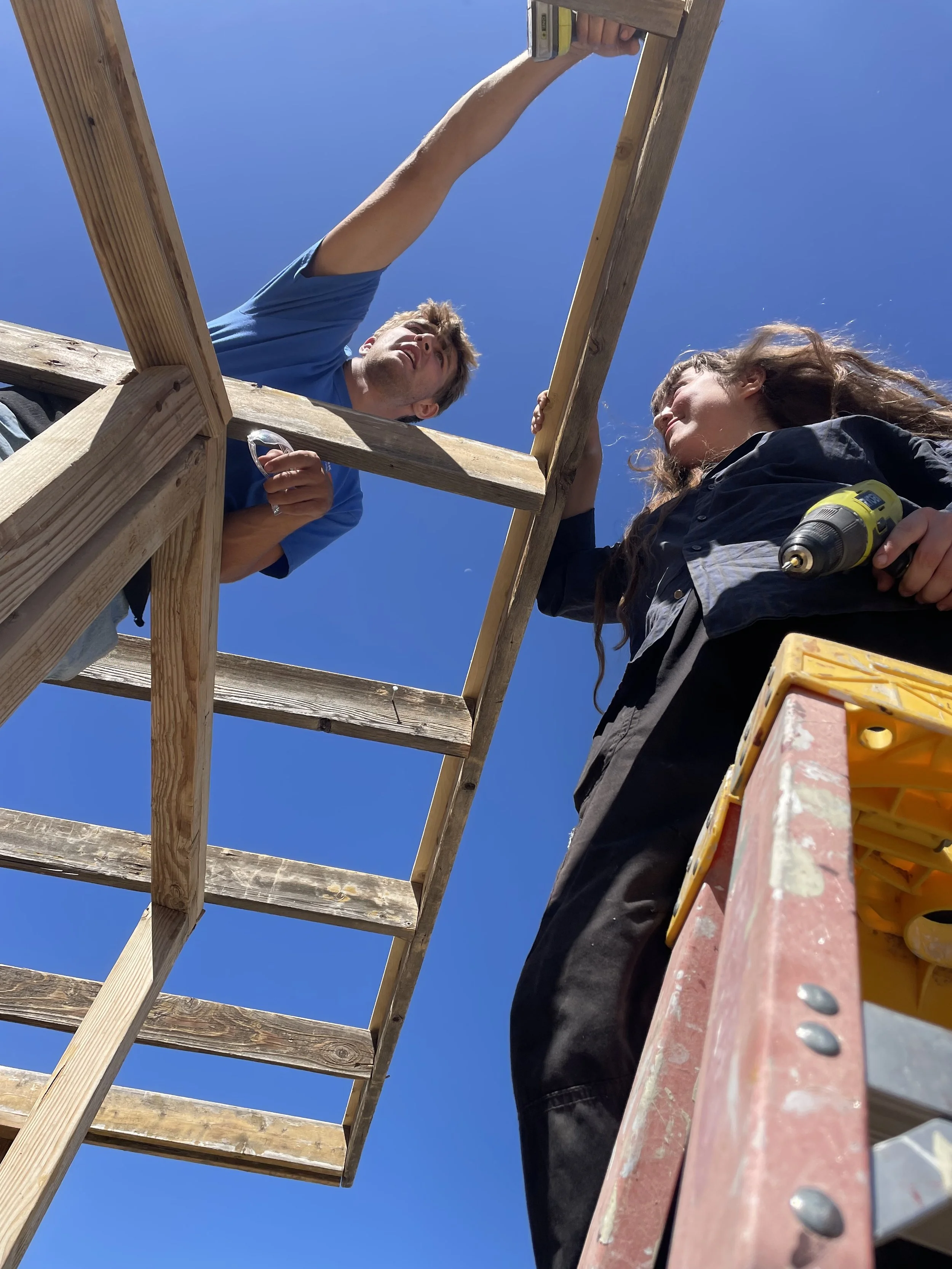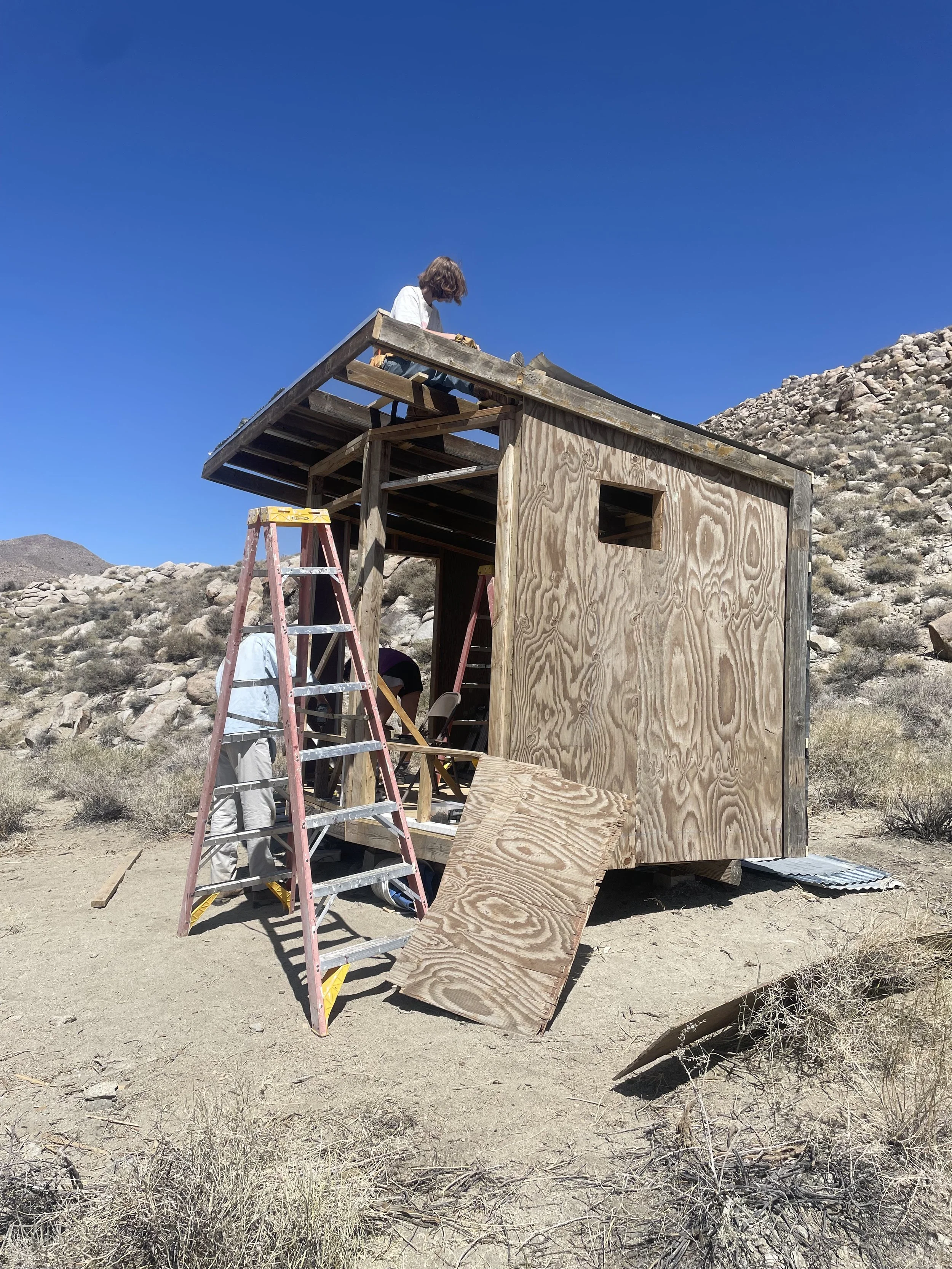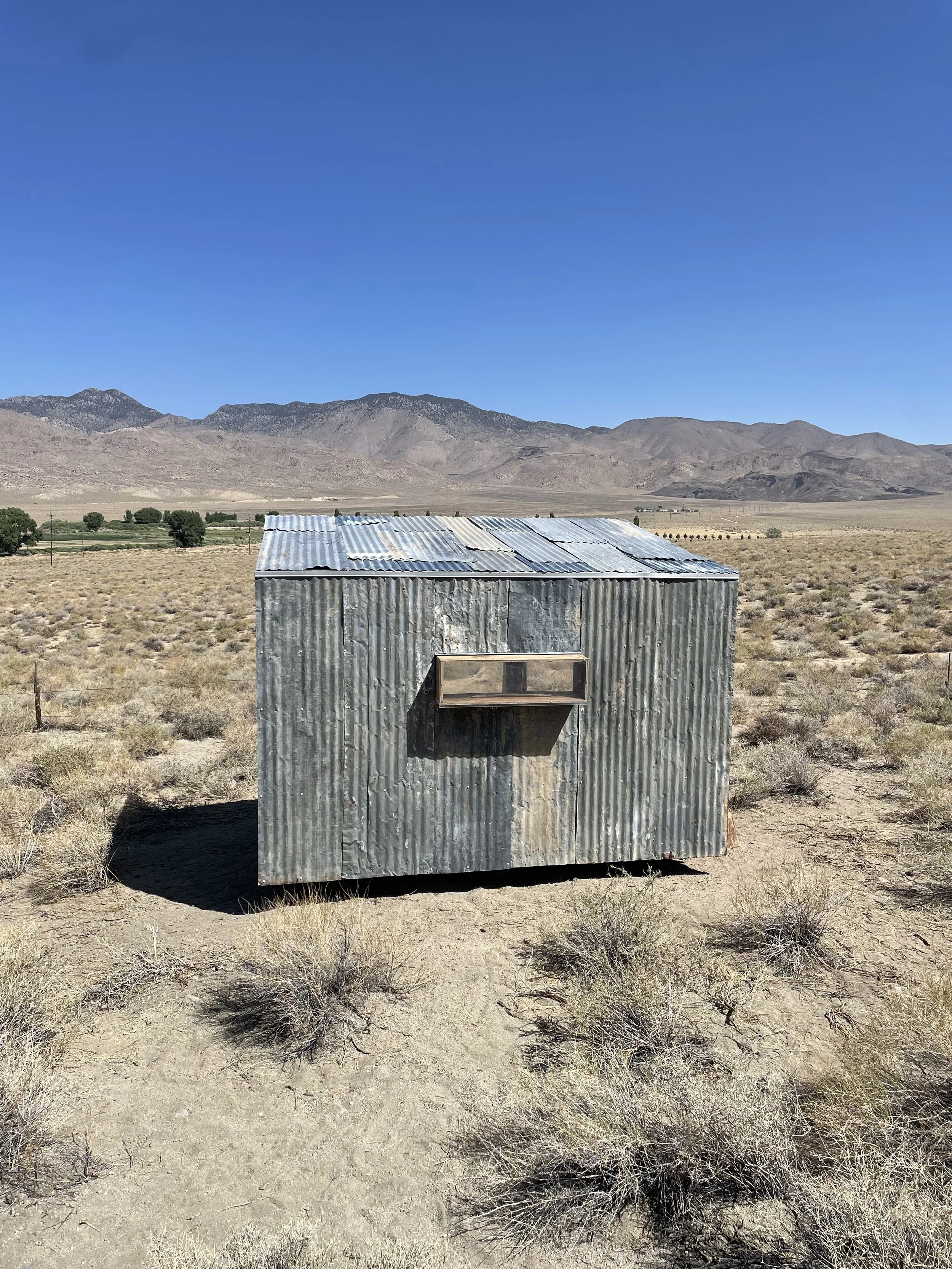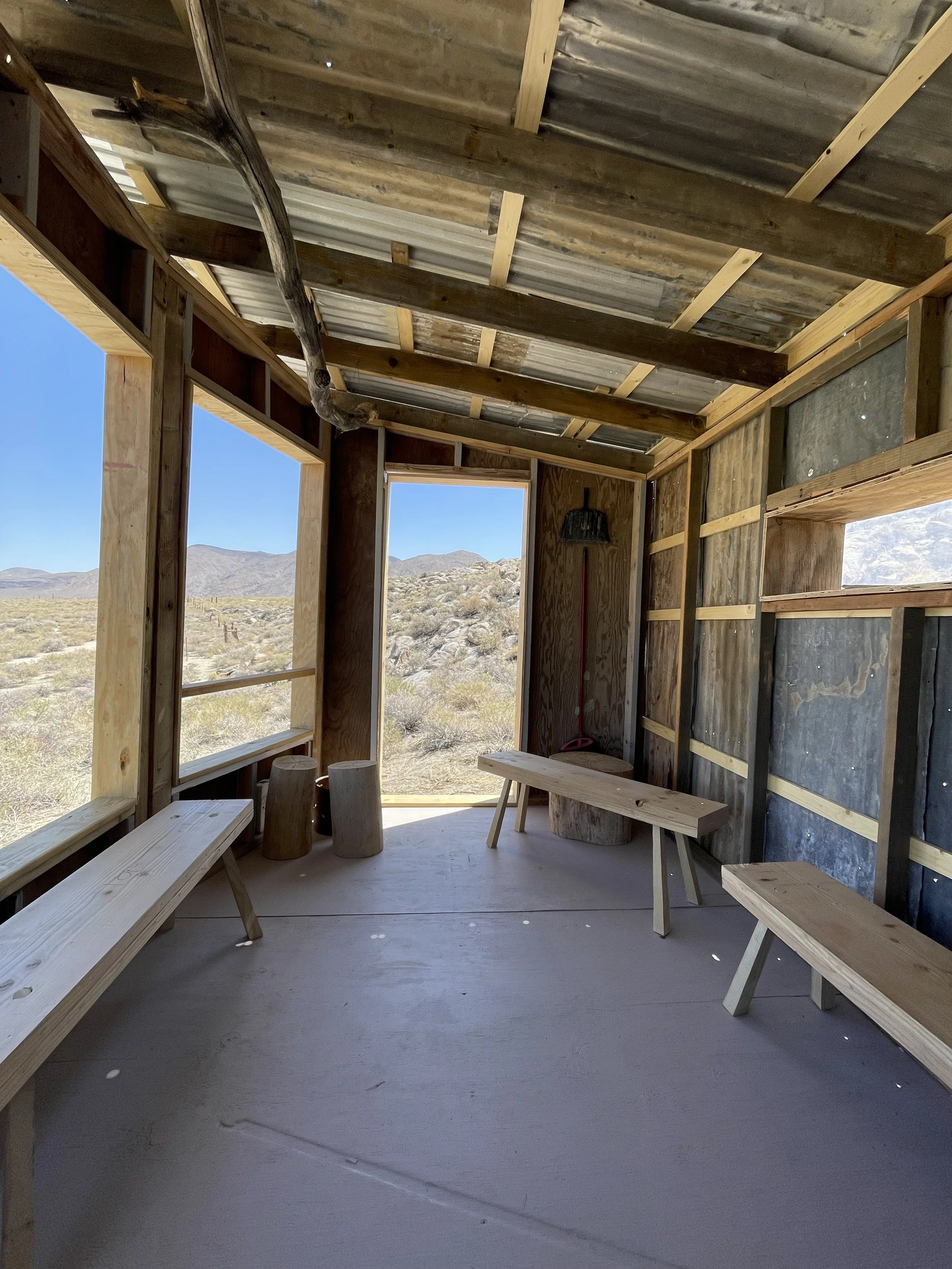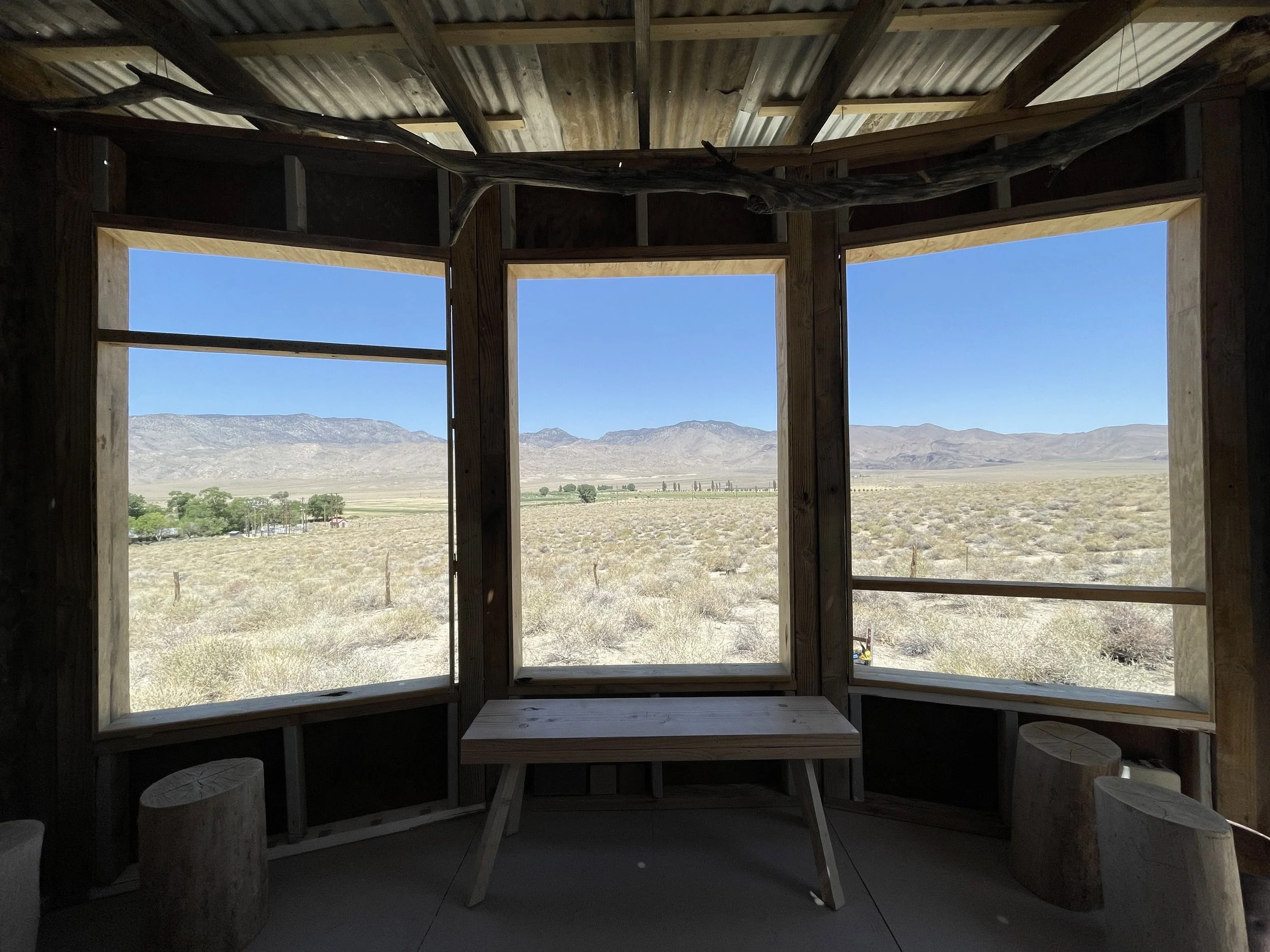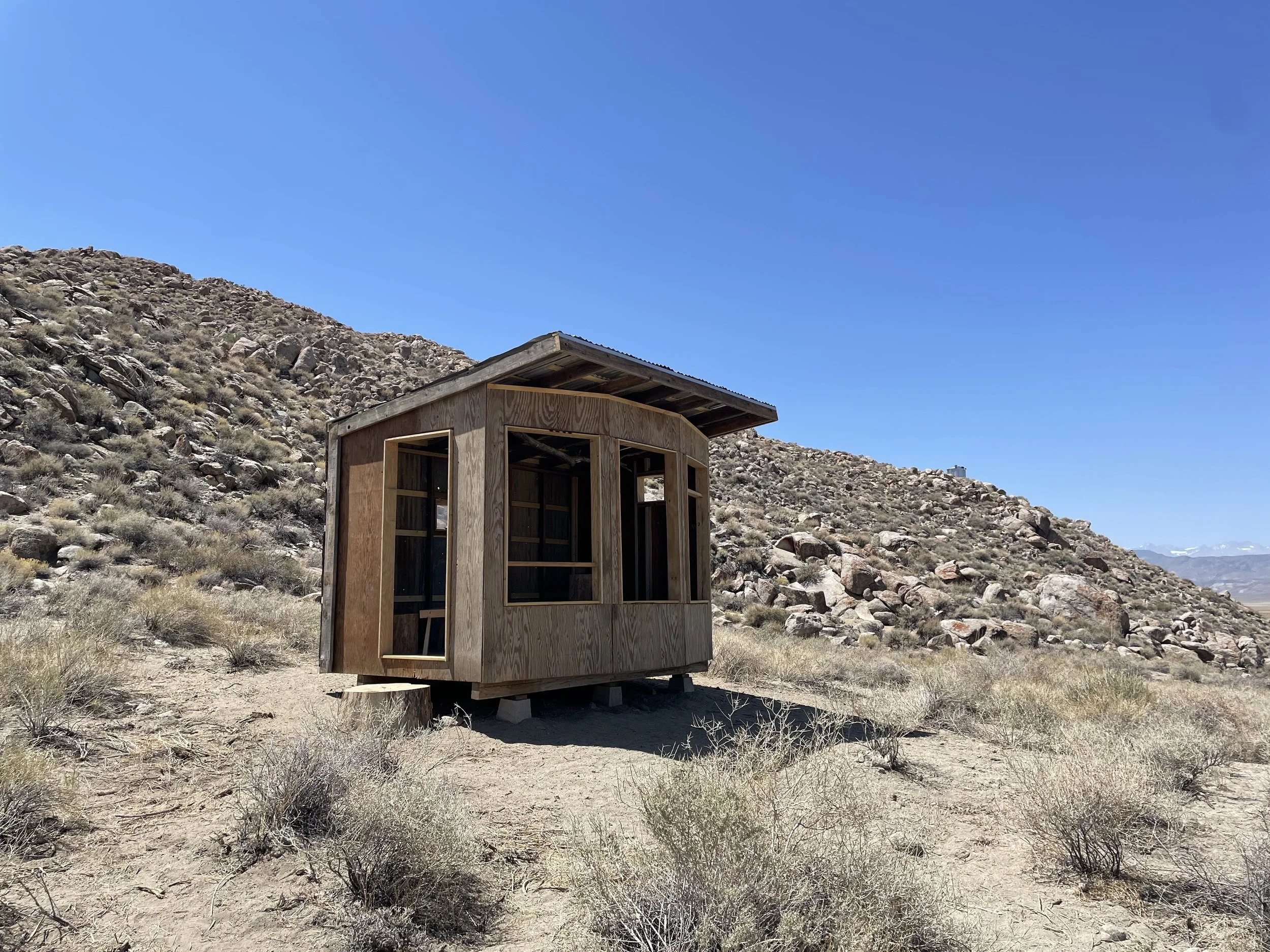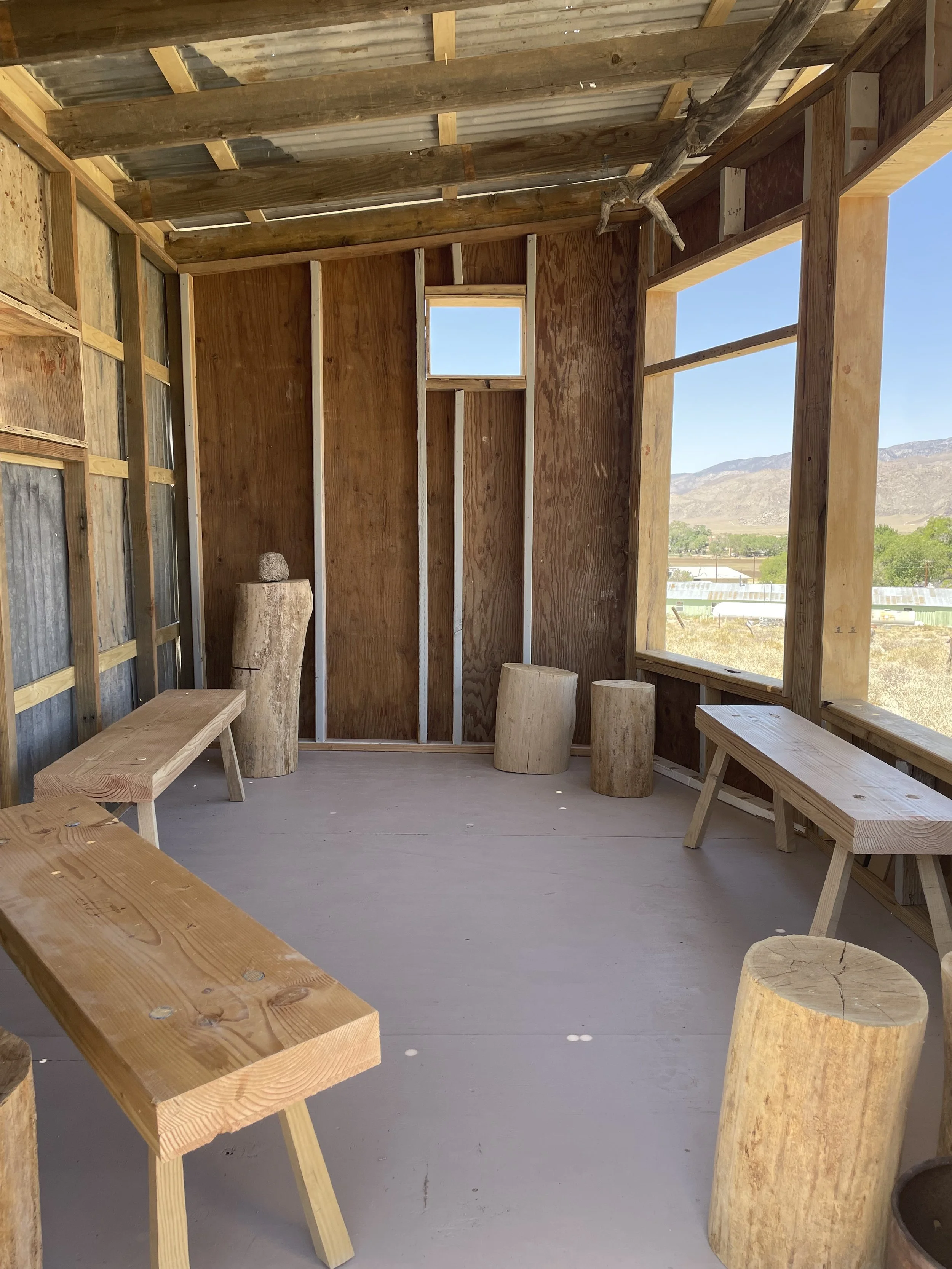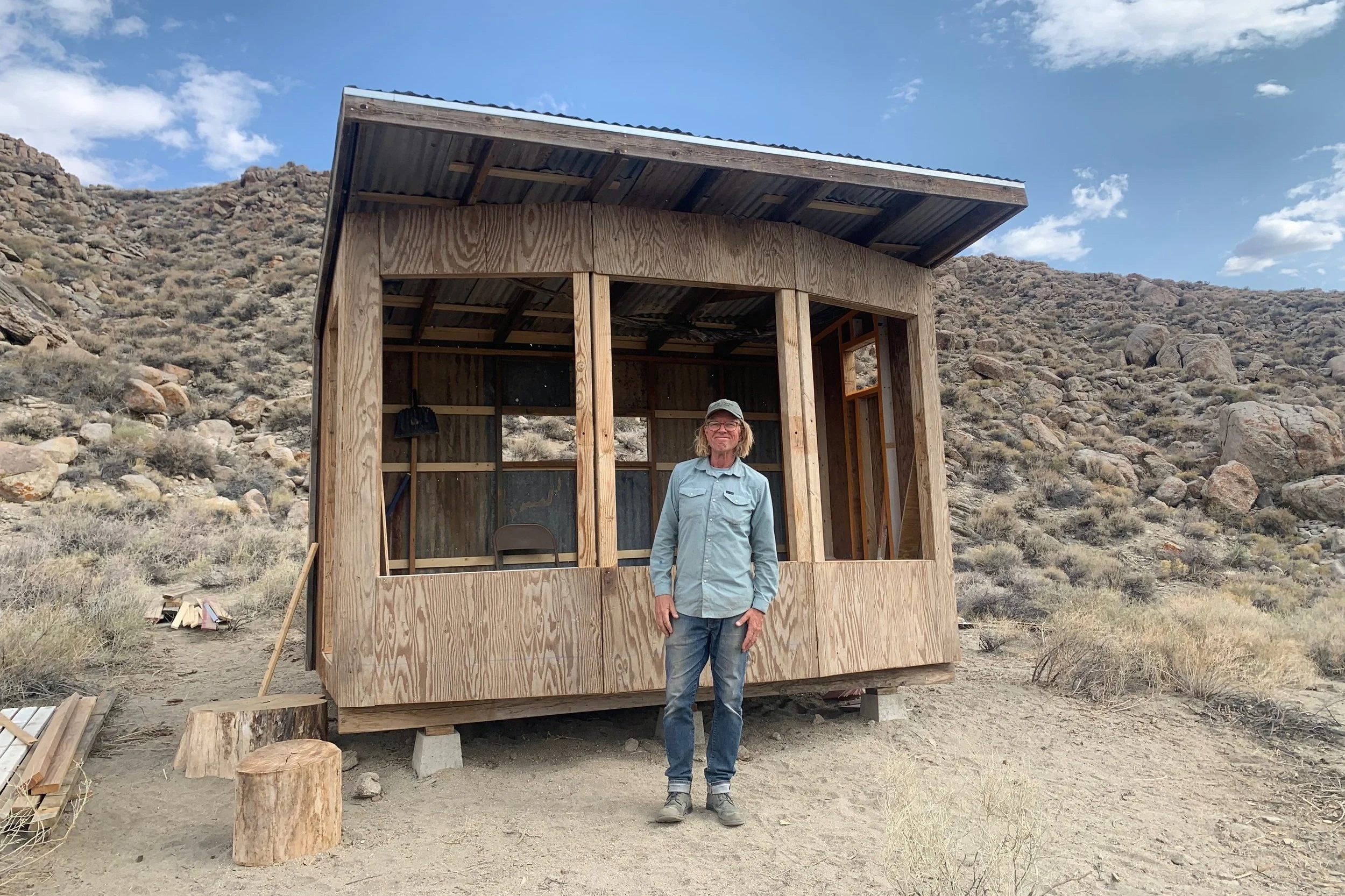Pictured: Deep Springs College, at the foot of the Inyo-White Mountains.
Earlier this summer, March Studio principal Todd Erlandson led If I Had a Hammer—an immersive design-build studio at Deep Springs College focused on making, craft, and construction in a rural context. Nestled in the remote Deep Springs Valley at the foot of the Inyo-White Mountains, the college is one of the most unique and prestigious institutions of higher learning in the U.S.—its educational program is rooted in three pillars: academics, student self-governance, and manual labor.
The seven-week course invited students to explore vernacular architecture and contribute a lasting structure to the campus community. Throughout, students navigated real-world design constraints—balancing material availability, function, and form—all while grounding their ideas in place-based observation and collective decision-making. Deep Springs’ mission—to prepare young people for a life of service through rigorous academics, labor, and self-governance—provided a guiding framework for the studio, reinforcing the value of hands-on learning and collaborative responsibility throughout the design-build process.
Pictured: Lining up for the college’s annual cattle branding.
Each week layered new complexity into the process. Coursework began with campus site walks and local engagement, where students practiced “seeing vernacular”—analyzing how necessity, local materials, and landscape shape place-based architecture. From there, students created sketches, models, and collages to reflect their understanding of spatial and material qualities, which helped guide initial conversations around program and site selection.
As the course progressed, students transitioned from rough models to spatial studies and section drawings, culminating in one shared design vision. Working collaboratively, they moved toward Type-V framing strategies and layout planning, ultimately preparing to construct a small-scale structure using locally salvaged lumber and materials, and earth-based finishes. A consistent focus on ecological intention and spontaneous craft guided each design decision.
Midway through the course, students participated in another Deep Springs tradition that echoed many of the same values: the college’s annual cattle branding. Over the course of two days, students, “staffulty”, and visiting alumni worked side by side roping, wrangling, and branding 162 head. Just like the design studio, the branding demanded care, coordination, and deep attentiveness to place. Both experiences brought together mind and body, grounding learning in action and community.
Pictured: A look inside the finished open-air chapel.
The studio’s central structure—referred to as the chapel—was deeply aligned with the founding principles of Deep Springs. In 1923, founder L.L. Nunn wrote:
“The desert has a deep personality; it has a voice. Great leaders in all ages have sought the desert and heard its voice. You can hear it if you listen…”
Close listening—both as a practice and a design methodology—shaped every phase of the studio. The siting of the chapel invites quiet, contemplative use while remaining open to the sounds, winds, and wildness of the desert beyond. More than just a structure, it serves as a vessel for presence and reflection—an offering to the values that define Deep Springs.
By the end of the course, students had gained not only technical and spatial skills, but a deeper understanding of what it means to build with purpose in service of place. If I Had a Hammer was less about constructing a single structure and more about cultivating a mindset—one rooted in attentiveness, resourcefulness, and care.
Pictured: Todd stands in front of the finished studio project built in collaboration with students at Deep Springs College.



